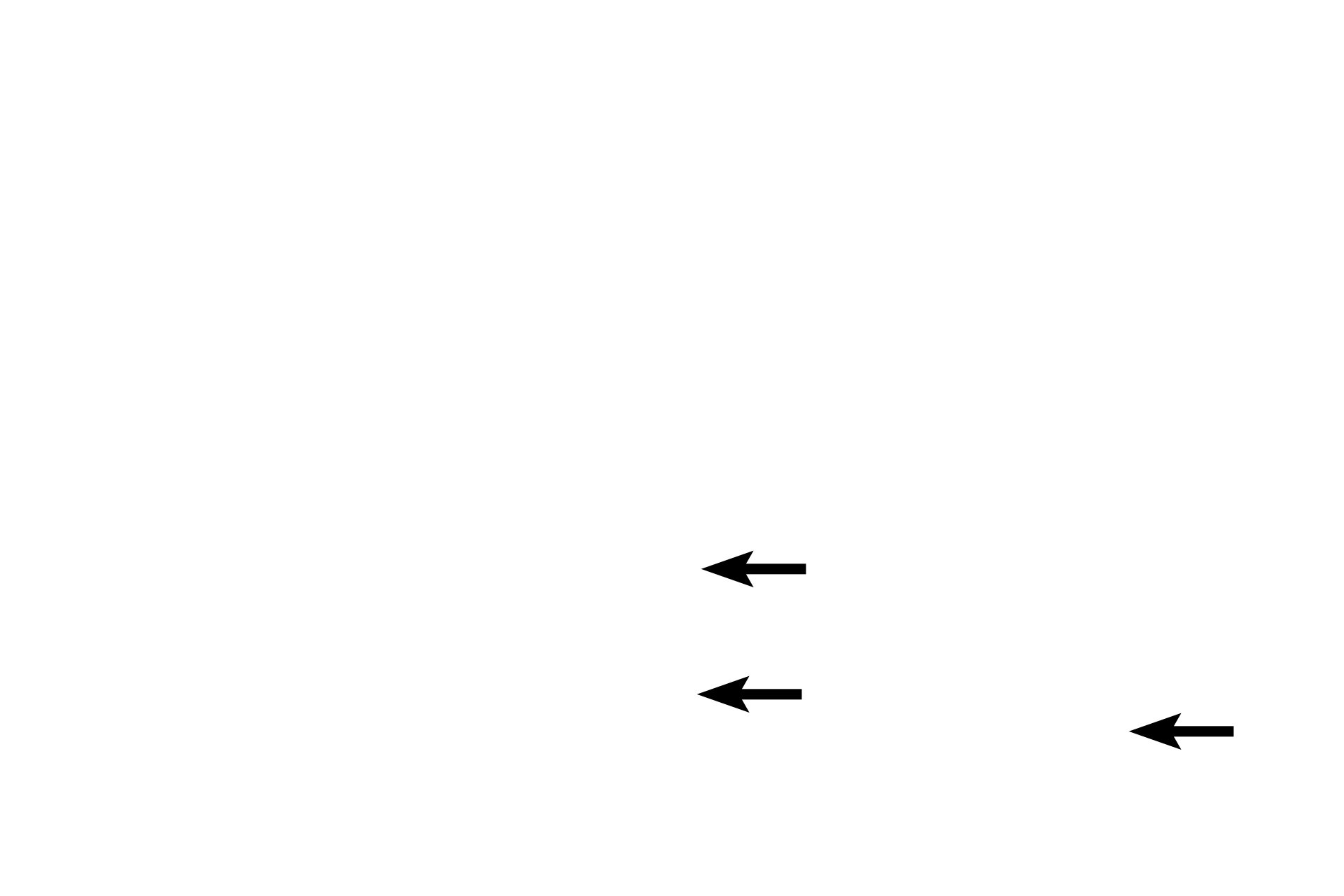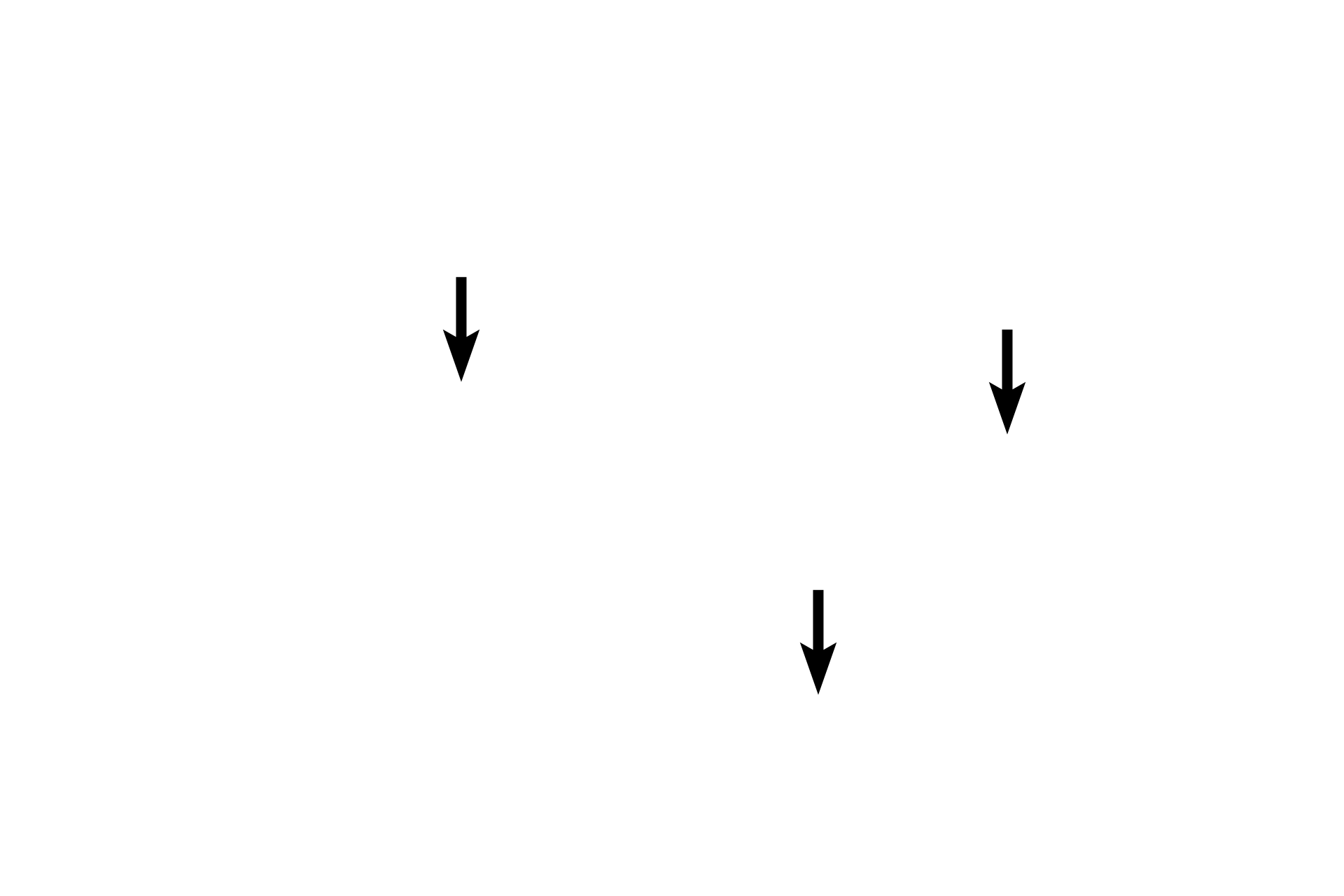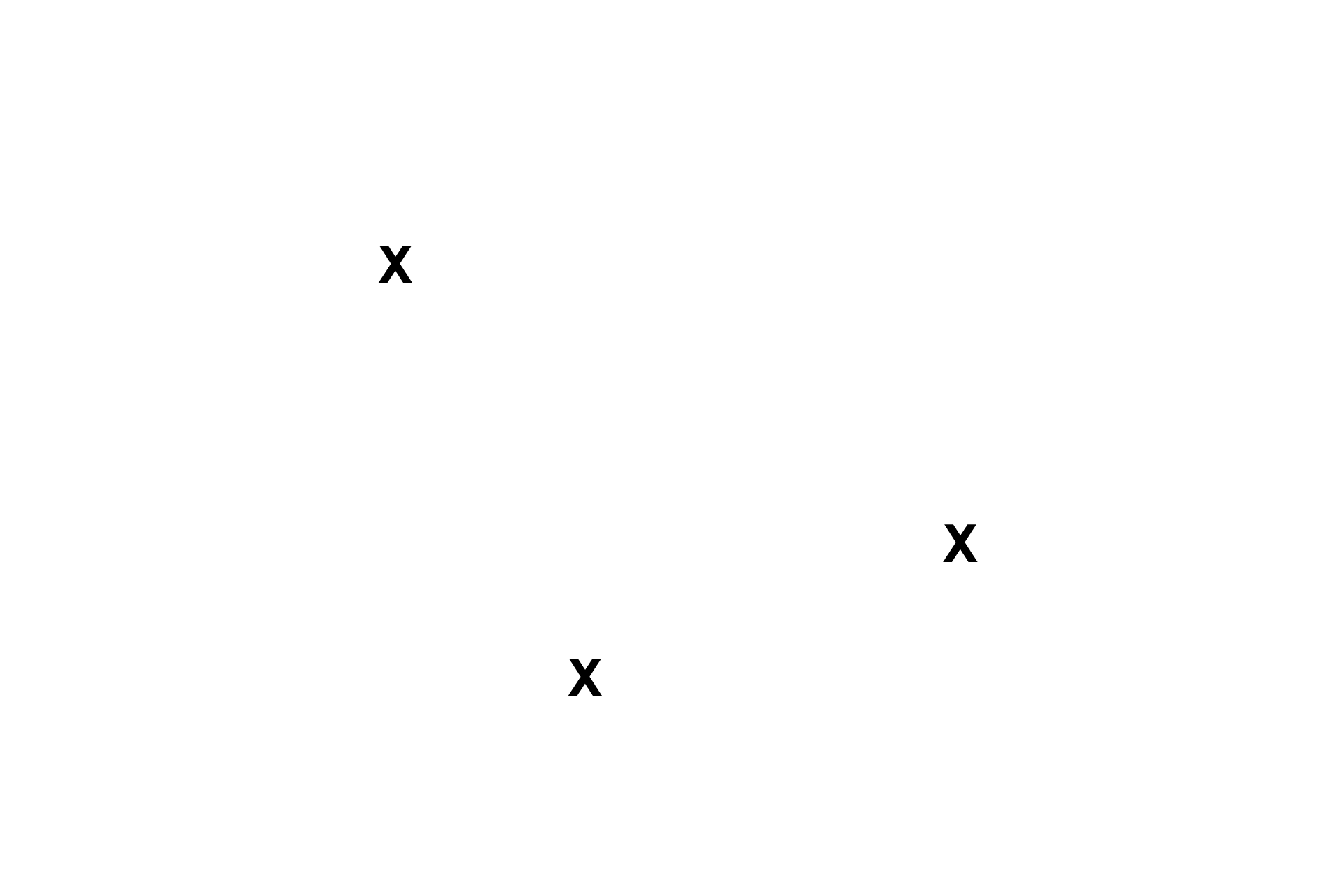
Bone: the tissue
Numerous osteoblasts cover the left edge of this bone spicule indicating an area of active bone deposition. Osteoid, the organic matrix, is deposited first and appears as a narrow, pale strip on the bone surface immediately beneath active osteoblasts. This organic matrix rapidly becomes mineralized with calcium phosphate (hydroxyapatite). Osteocytes are embedded within the bony matrix. Endosteal (lining) cells line tunnels within bone (Haversian canals) that convey blood vessels. The presence of osteoclasts along the upper border indicates an area of bone resorption. Compact woven bone, 400x

Osteoblasts
Numerous osteoblasts cover the left edge of this bone spicule indicating an area of active bone deposition. Osteoid, the organic matrix, is deposited first and appears as a narrow, pale strip on the bone surface immediately beneath active osteoblasts. This organic matrix rapidly becomes mineralized with calcium phosphate (hydroxyapatite). Osteocytes are embedded within the bony matrix. Endosteal (lining) cells line tunnels within bone (Haversian canals) that convey blood vessels. The presence of osteoclasts along the upper border indicates an area of bone resorption. Compact woven bone, 400x

- Osteoid
Numerous osteoblasts cover the left edge of this bone spicule indicating an area of active bone deposition. Osteoid, the organic matrix, is deposited first and appears as a narrow, pale strip on the bone surface immediately beneath active osteoblasts. This organic matrix rapidly becomes mineralized with calcium phosphate (hydroxyapatite). Osteocytes are embedded within the bony matrix. Endosteal (lining) cells line tunnels within bone (Haversian canals) that convey blood vessels. The presence of osteoclasts along the upper border indicates an area of bone resorption. Compact woven bone, 400x

Bone-lining cells
Numerous osteoblasts cover the left edge of this bone spicule indicating an area of active bone deposition. Osteoid, the organic matrix, is deposited first and appears as a narrow, pale strip on the bone surface immediately beneath active osteoblasts. This organic matrix rapidly becomes mineralized with calcium phosphate (hydroxyapatite). Osteocytes are embedded within the bony matrix. Endosteal (lining) cells line tunnels within bone (Haversian canals) that convey blood vessels. The presence of osteoclasts along the upper border indicates an area of bone resorption. Compact woven bone, 400x

Osteocytes
Numerous osteoblasts cover the left edge of this bone spicule indicating an area of active bone deposition. Osteoid, the organic matrix, is deposited first and appears as a narrow, pale strip on the bone surface immediately beneath active osteoblasts. This organic matrix rapidly becomes mineralized with calcium phosphate (hydroxyapatite). Osteocytes are embedded within the bony matrix. Endosteal (lining) cells line tunnels within bone (Haversian canals) that convey blood vessels. The presence of osteoclasts along the upper border indicates an area of bone resorption. Compact woven bone, 400x

Osteoclasts
Numerous osteoblasts cover the left edge of this bone spicule indicating an area of active bone deposition. Osteoid, the organic matrix, is deposited first and appears as a narrow, pale strip on the bone surface immediately beneath active osteoblasts. This organic matrix rapidly becomes mineralized with calcium phosphate (hydroxyapatite). Osteocytes are embedded within the bony matrix. Endosteal (lining) cells line tunnels within bone (Haversian canals) that convey blood vessels. The presence of osteoclasts along the upper border indicates an area of bone resorption. Compact woven bone, 400x

- Howships lacunae
Numerous osteoblasts cover the left edge of this bone spicule indicating an area of active bone deposition. Osteoid, the organic matrix, is deposited first and appears as a narrow, pale strip on the bone surface immediately beneath active osteoblasts. This organic matrix rapidly becomes mineralized with calcium phosphate (hydroxyapatite). Osteocytes are embedded within the bony matrix. Endosteal (lining) cells line tunnels within bone (Haversian canals) that convey blood vessels. The presence of osteoclasts along the upper border indicates an area of bone resorption. Compact woven bone, 400x

Extracellular matrix
Numerous osteoblasts cover the left edge of this bone spicule indicating an area of active bone deposition. Osteoid, the organic matrix, is deposited first and appears as a narrow, pale strip on the bone surface immediately beneath active osteoblasts. This organic matrix rapidly becomes mineralized with calcium phosphate (hydroxyapatite). Osteocytes are embedded within the bony matrix. Endosteal (lining) cells line tunnels within bone (Haversian canals) that convey blood vessels. The presence of osteoclasts along the upper border indicates an area of bone resorption. Compact woven bone, 400x